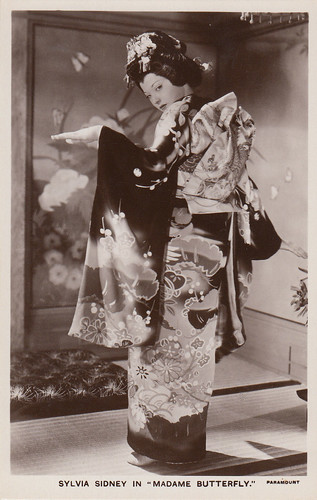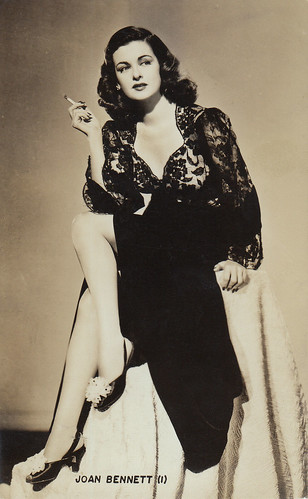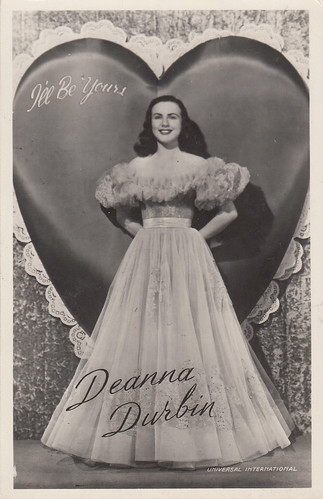However, the star Travis Banton is most associated with is Marlene Dietrich. The actress, who was once wittily described by Hitchcock as "a professional costume designer", closely collaborated with him to create an unforgettable glamourous image. Travis Banton knew that even the most extreme creations would look good on her. As Margaret J. Bailey, author of the book 'Those Glorious Glamour Years', wrote: "Garments outrageous on anyone else were carried routinely by Dietrich. No other actress could sustain the heavy glamour load several of her outfits conveyed".
Travis Banton stayed at Paramount until 1938. He then worked for 20th Century Fox (1939-1941) and for Universal (1945-1948). In the 1950s, he notably designed Rosalind Russell’s costumes for the Broadway play 'Auntie Mame' (1956-1958). He passed away on 2 February 1958. Edith Head, who succeeded Travis Banton as head of the Paramount costume design department, allegedly said about him: "He was a marvellous designer. Any talent I might have would have lain undiscovered if he hadn’t lighted the way for me. In my opinion, he was the greatest."

Mexican postcard by CIF, no. 1835. Thais Valdemar (wrongly captioned as Anna May Wong) in The Dressmaker from Paris (Paul Bern, 1925).
At the time this dress was described as: "A tight-fitting gown of flesh colour silk, embroidered with pearls, diamonds and gold spangles, and edged with crystal fringes."

German postcard by Ross Verlag, no. 1992/1, 1927-1928. Photo: Parufamet. Esther Ralston in Fashions for Women (Dorothy Arzner, 1927).

German postcard by Ross Verlag, no. 3389/1, 1928-1929. Photo: Paramount Pictures. Alice White in Gentlemen Prefer Blondes (Malcolm St. Clair, 1928).

French postcard by Cinémagazine, Paris, no. 530. Ruth Taylor in Gentlemen Prefer Blondes (Malcolm St. Clair, 1928).

German postcard by Ross Verlag, no. 4105/2, 1929-1930. Photo: Paramount Pictures. Pola Negri in Three Sinners (Rowland V. Lee, 1928).

French postcard by Europe, no. 350. Photo: Paramount Pictures. Evelyn Brent in His Tiger Lady (Hobart Henley, 1928).

Spanish postcard by La Novela Frivola Cinematografica, no. 25. Evelyn Brent in His Tiger Lady (Hobart Henley, 1928).

French postcard by Europe, no. 348. Clara Bow in The Fleet’s In (Malcolm St. Clair, 1929).

German postcard by Ross Verlag, no. 5139/1, 1930-1931. Photo: Paramount Pictures. Evelyn Brent on a publicity portrait for Interference (Lothar Mendes, Roy Pomeroy, 1928).
“The gown is worn over a silver tissue slip and is heavily embroidered with brilliants and crystal. It has large wing sleeves and bands of crystal fall from the brilliant fastening, in front. The turban of silver with which Miss Brent covers her hair adds the ultra chic touch to an elaborate costume.” (from an article published in December 1928 in the Australian Sunday Times).

German postcard by Ross Verlag, no. 4986/1, 1929-1930. Photo: Paramount Pictures. Kay Francis in Behind the Make-Up (Robert Milton, 1930).

German postcard by Ross Verlag, no. 5544/1, 1930-1931. Photo: Paramount. Clara Bow in Her Wedding Night (Frank Tuttle, 1930).

German postcard by Ross Verlag, no. 5126/2, 1930-1931. Photo: Paramount. Marlene Dietrich in Morocco (Josef von Sternberg, 1930).

French postcard by Edition Ross, no. 5379/3, 1930-1931. Photo: Paramount. Marlene Dietrich in Morocco (Josef von Sternberg, 1930).

German postcard by Ross Verlag, no. 7227/1, 1932-1933. Photo: Paramount. Anna May Wong in Daughter of the Dragon (Lloyd Corrigan, 1931).

German postcard by Eidelsan, Serie II, Bild 116. Carole Lombard in No One Man (Lloyd Corrigan, 1932).

German postcard by Ross Verlag, no. 6678/1, 1931-1932. Marlene Dietrich and Anna May Wong in Shanghai Express (Josef von Sternberg, 1932).

Dutch postcard by M. Bonnist & Zonen, Amsterdam, no. B226. Photo: Paramount. Sylvia Sidney, as the Japanese character Cho-Cho-San, in Madame Butterfly (Marion Gering, 1932).

Dutch postcard by M. Bonnist & Zonen, Amsterdam, no. B251. Photo: Paramount. Marlene Dietrich in The Song of Songs (Rouben Mamoulian, 1933).

Italian postcard by Fotocelere, no. 15. Photo: M.G.M. Miriam Hopkins in Design for Living (Ernst Lubitsch, 1933).

German postcard by Ross Verlag, no. 8496/1, 1933-1934. Photo: Paramount. Marlene Dietrich in The Scarlet Empress (Josef von Sternberg, 1934).
Travis Banton allegedly said about The Scarlett Empress: "Miss Dietrich’s costumes in that picture were expressive of the period’s fashions, without being mere stereotyped copies of sketches found in books. I placed myself mentally in the position of a designer of the middle eighteenth century".

Dutch postcard by M. Bonnist & Zonen, Amsterdam, no. B350. Photo: Paramount. Marlene Dietrich in The Scarlett Empress (Josef von Sternberg, 1934).

Dutch postcard by M. Bonnist & Zonen, Amsterdam, no. B367. Photo: Paramount. Mae West in Belle of the Nineties (Leo McCarey, 1934).

Dutch postcard by M. Bonnist & Zonen, Amsterdam, no. B363. Photo: Paramount. Claudette Colbert in Cleopatra (Cecil B. DeMille, 1934).

German postcard by Ross Verlag, no. 9596/1, 1935-1936. Photo: Paramount. Anna May Wong in Limehouse Blues (Alexander Hall, 1934).
According to the Costume Institute of the Metropolitan Museum of Art in New York, where the gown is now displayed: "The dragon motif adds a distinct Asian influence, dazzling in its execution in gold and silver sequins on luxurious satin."

German postcard by Ross Verlag, no. 8991/1, 1933-1934. Photo: Paramount. Marlene Dietrich in The Devil Is a Woman (Josef von Sternberg, 1935).
Variety Magazine wrote: "Not even Garbo in the Orient has approached, for special effects, Dietrich in Spain. With fringe, lace, sequins, carnations, chenille, nets, embroideries, and shawls, Miss Dietrich is hung, wrapped, draped, swathed, and festooned. She emerges as a glorious achievement, a supreme consolidation of the sartorial, make-up, and photographic arts

Dutch postcard by M. Bonnist & Zonen, Amsterdam, no. B395. Photo: Paramount. Marlene Dietrich in The Devil Is a Woman (Josef von Sternberg, 1935).

Italian postcard by Ballerini & Fratini, Firenze (B.F.F. Edit.), no. 2745. Carole Lombard.
On the back of a publicity portrait of Carole Lombard wearing this outfit, she is referred to as "Carole Lombard of Paramount’s Rumba". So, we can date it from about 1935, the year Rumba was released, although it seems that Lombard didn’t wear it in the movie. The caption for this ensemble was: "Lightweight beige tweed lined in burgundy corduroy carries out Travis Banton’s desire to create a costume equally appropriate for town or country wear".

French postcard by Erpé, no. 756. Photo: Paramount. Marlene Dietrich in Desire (Frank Borzage, 1936).

German postcard by Ross Verlag, no. 9712/1, 1935-1936. Photo: Paramount. Ida Lupino in Yours for the Asking (Alexander Hall, 1936).
This is how this outfit was then depicted on a publicity portrait: "White Souffle is the background of this formal gown. The embroidery is made of silver paillettes and corresponds to the long flowing cape which matches the girdle worn at the tightly fitted waist".

Dutch postcard. Dorothy Lamour in Swing High, Swing Low (Mitchell Leisen, 1937).

German postcard by Ross Verlag, no. A1138/1, 1937-1938. Photo: Paramount. Claudette Colbert in I Met Him in Paris (Wesley Ruggles, 1937).

Postcard from the Dutch East Indies (now Indonesia). Irene Dunne in High, Wide and Handsome (Rouben Mamoulian, 1937).

German postcard by Ross Verlag, no. A 1977/1, 1937-1938. Photo: Paramount. Marlene Dietrich in Angel (Ernst Lubitsch, 1937).
This is allegedly the most expensive gown Travis Banton ever designed. "It’s a three-piece jewel-encrusted evening gown consisting of a fitted bodice with three-quarter sleeves; full-length skirt with train and matching stole trimmed with sable. The garment is solidly embroidered in a paisley motif with gold crystal caviar beads, seed pearls, gold sequins, small rhinestones, gold bullion thread and paste rubies and emeralds". (Description from The Collection of Motion Picture Costume Design). Travis Banton once declared about it: "It was simple in lines, of Persian design, and looked like a piece of woven jewellery. A score of embroiderers worked on it for two and a half weeks".

Italian postcard by Ballerini & Fratini, Firenze, no. 2535. Photo: Paramount. Claudette Colbert in Bluebeard’s Eight Wife (Ernst Lubitsch, 1938).

Spanish postcard, no. 291. Photo: Fox. Carmen Miranda in Down Argentine Way (Irving Cummings, 1940).

Spanish postcard by Sobe, no. 475. Photo: 20th Century Fox. Rita Hayworth in Blood and Sand (Rouben Mamoulian, 1941).

Spanish postcard no. 151. Merle Oberon in A Song to Remember (Charles Vidor, 1945).
Merle Oberon once said about Travis Banton: "He not only knew what the character ought to look like but also understood what an actress was the happiest wearing, which is very rare for a costume designer. As a result, I never found it necessary to make a single change on any of his drawings".

Vintage postcard. Joan Bennett in Scarlet Street (Fritz Lang, 1945).

Spanish postcard, no. 3057. Yvonne De Carlo in Frontier Gal (Charles Lamont, 1945).

Spanish postcard by Ibis, no. 5. Maria Montez in Tangier (George Waggner, 1946).

Spanish postcard by Archivo Bermejo, Barcelona. Merle Oberon and Turhan Bey in Night in Paradise (Arthur Lubin, 1946).

Spanish postcard by Belfo, no. 3584. Lucille Ball in Lover Come Back (William A. Seiter, 1946).

Dutch postcard by J. Sleding N.V., Amsterdam, no. 1051. Ginger Rogers in Magnificent Doll (Frank Borzage, 1946).

Dutch postcard, no. 3535. Photo: Universal International. Deanna Durbin in I’ll be Yours (William A. Seiter, 1947).

French or Belgian postcard. Joan Bennett in Secret Beyond the Door (Fritz Lang, 1947).
Text and postcards: Marlene Pilaete.
No comments:
Post a Comment